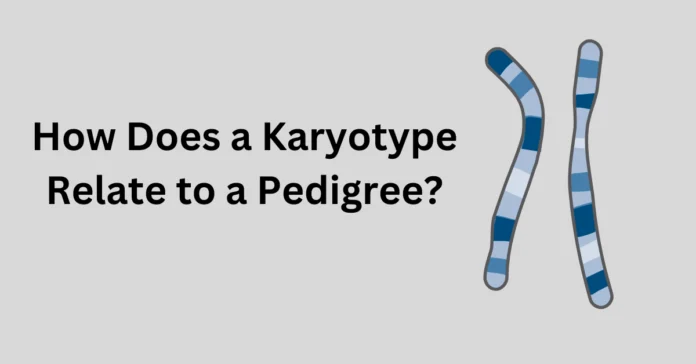Genetic analysis plays a crucial role in understanding inherited traits and diagnosing genetic disorders. Two essential tools in genetics are the karyotype and the pedigree chart. While they serve different purposes, both contribute significantly to identifying chromosomal abnormalities and tracing inheritance patterns.
This article explores the relationship between karyotypes and pedigrees, illustrating how they complement each other in genetic studies.
What is a Karyotype?
A karyotype is a visual representation of an individual’s chromosomes, arranged in pairs according to size, shape, and banding pattern. It is typically obtained through a chromosome spread from a cell sample, such as blood or amniotic fluid. Karyotyping is primarily used to detect chromosomal abnormalities, including:
- Numerical abnormalities, such as trisomy 21 (Down syndrome) or monosomy X (Turner syndrome).
- Structural abnormalities, including deletions, duplications, inversions, or translocations.
What is a Pedigree?
A pedigree chart is a diagram that depicts the inheritance patterns of traits or disorders across multiple generations within a family. It uses standardized symbols to represent individuals and their relationships, helping geneticists and medical professionals identify dominant, recessive, or X-linked traits.
Pedigrees are commonly used to:
- Track the inheritance of genetic disorders.
- Predict the likelihood of an individual inheriting a particular trait.
- Identify carriers of recessive conditions.
How Does a Karyotype Relate to a Pedigree?
Karyotypes and pedigrees are interconnected in genetic analysis, particularly in diagnosing hereditary conditions. Their relationship can be understood in the following ways:
- Confirming Pedigree Findings with Karyotyping
- If a pedigree suggests a genetic disorder, a karyotype can provide direct evidence by revealing chromosomal abnormalities. For instance, if multiple family members exhibit features of Down syndrome, karyotyping can confirm the presence of trisomy 21.
- Tracing Chromosomal Abnormalities in Families
- Certain structural abnormalities, like balanced translocations, may not cause symptoms in carriers but can lead to miscarriages or congenital disorders in offspring. A pedigree can highlight a pattern of repeated pregnancy losses, prompting a karyotype analysis to detect translocations.
- Determining Inheritance Patterns
- Some genetic conditions are caused by chromosomal alterations that can be passed down through generations. By analyzing both a pedigree and a karyotype, geneticists can determine whether the disorder follows a dominant, recessive, or X-linked pattern.
- Assessing Reproductive Risks
- Couples with a family history of genetic disorders may undergo karyotype testing if a pedigree analysis suggests a high risk of transmitting a chromosomal abnormality. This is crucial for genetic counseling and family planning.
Conclusion
Karyotypes and pedigrees are complementary tools in genetic studies. While pedigree charts help track the inheritance of traits across generations, karyotyping provides a direct look at chromosomal structures to confirm diagnoses. By integrating both methods, geneticists can gain a comprehensive understanding of inherited conditions, enabling accurate diagnoses, risk assessments, and informed reproductive decisions.


